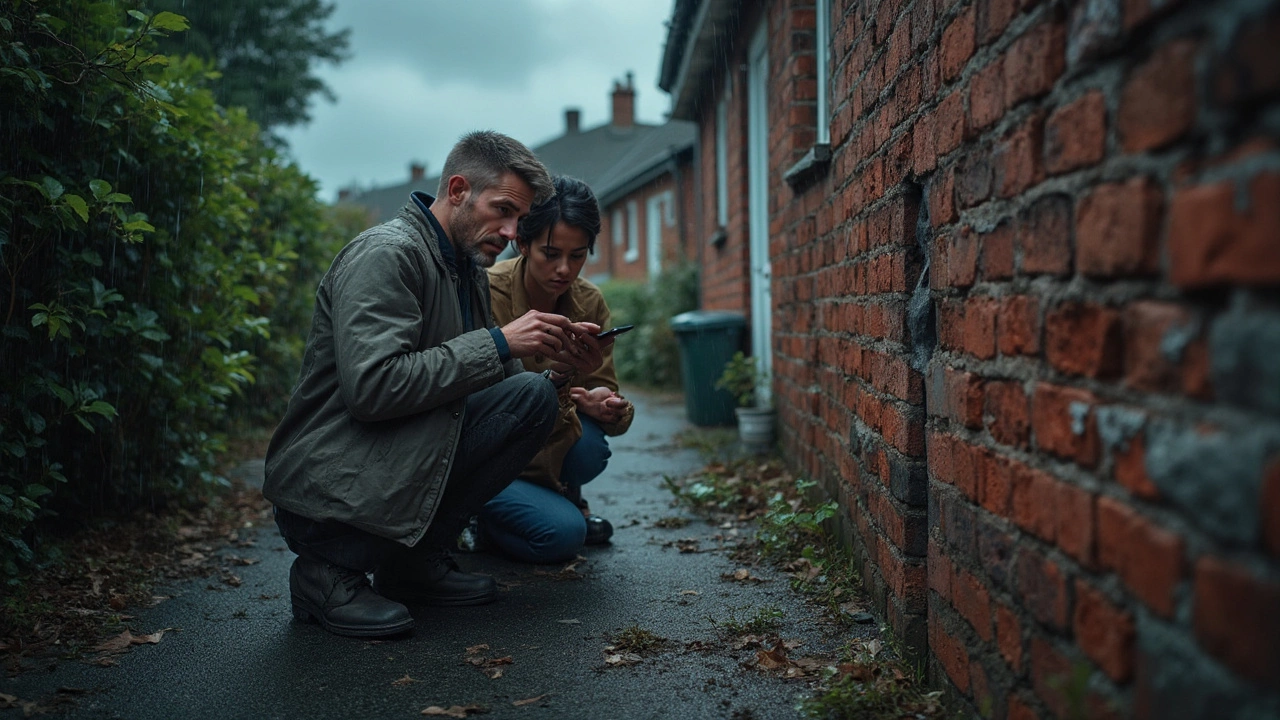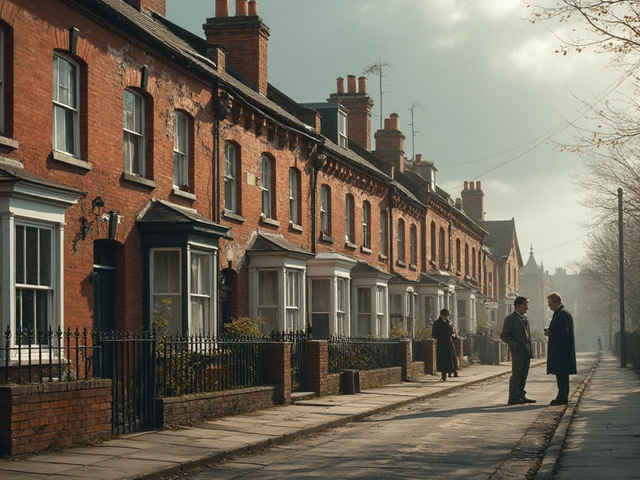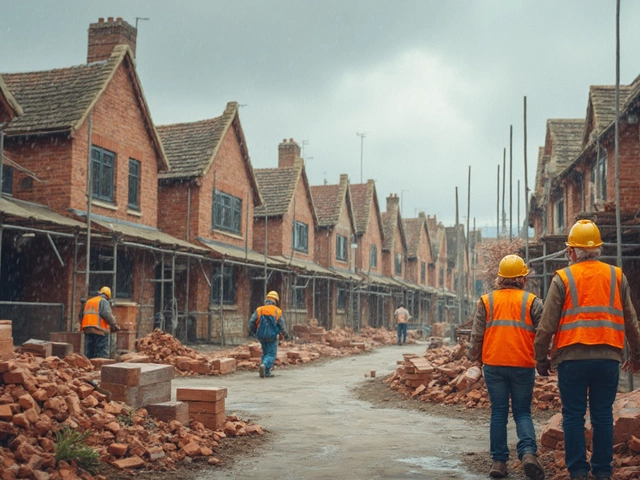Foundation leaks freak a lot of homeowners out, and with good reason. If you spot water pooling around your basement floor or cracks creeping along the walls, your first thought is probably, “Is this covered by my insurance?” It’s not a simple yes or no—insurance companies are picky about what they pay for, especially when it comes to anything involving your foundation.
The real kicker? Most homeowners insurance doesn’t cover all types of foundation damage. If the leak comes from something sudden, like a burst pipe, you might be in luck. But if it’s due to long-term wear, poor drainage, or plain old neglect, you’re almost always on the hook. So before you start knocking on your insurer’s door, it’s worth breaking down the fine print and knowing what you’re actually protected against. That way, you’ll avoid nasty surprises when you need help the most.
- What Counts as a Foundation Leak?
- Standard Homeowners Insurance: What’s Usually Covered
- Typical Exclusions You’ll Find
- Surprising Causes That Make a Difference
- How to Strengthen Your Claim
- Tips to Prevent Costly Foundation Leaks
What Counts as a Foundation Leak?
A foundation leak happens when water sneaks into or under your home’s foundation, finding its way through cracks or gaps. It’s not always as clear as a giant puddle, though. Sometimes you just see a damp basement wall, musty smells, or that white chalky stuff (that’s efflorescence) left behind as water evaporates. These leaks can start small, but over time, they chip away at the strength of your foundation.
Here’s what typically shows you’ve got a leak on your hands:
- Pooled water inside your basement or crawl space
- Wet or stained drywall and carpets near the floor
- Cracks in basement floors or walls that feel damp
- Visible mold or a musty odor coming from below the house
Sometimes the cause is obvious—like a busted pipe under the slab. Other times, it’s slow and sneaky: poor yard drainage, clogged gutters, or even just a rainy season with nowhere for water to go. But regardless of how it starts, foundation leaks threaten your home’s health and can cost a fortune if you don’t act fast.
"Water is the single greatest threat to the structural integrity of your home’s foundation," says The International Association of Certified Home Inspectors. "All foundations crack, but water can turn a minor crack into a major problem."
Why do you care about these details? Because insurance companies do—they look hard at how and why water got there. If the source was a sudden, accidental event, your standard homeowners insurance might help. Ongoing problems or old cracks? That’s a much tougher sell.
| Common Foundation Leak Signs | Possible Source |
|---|---|
| Standing water in basement | Burst pipe or heavy rain |
| Mildew on walls | Poor drainage, soil issues |
| Cracks growing over time | Soil movement, tree roots |
| Damp carpet or floors | Hidden leaks or seepage |
Spotting any of these signs early gives you a fighting chance to fix the issue before it messes up your house (and your wallet). If you ever notice them, grab your phone and take photos or videos—these can really help if you need to file an insurance claim later.
Standard Homeowners Insurance: What’s Usually Covered
If you’ve ever combed through your policy, you’ll notice that your homeowners insurance mostly protects you from “sudden and accidental” stuff. So, if a pipe explodes or a tree falls through your roof after a storm, that’s the kind of emergency insurance was made for. But things get a little tricky when you’re dealing with foundation leaks.
Here’s the bottom line: your policy will usually pay for foundation damage if it results from a covered peril. The most common covered causes related to foundation leaks include:
- Sudden water leaks from burst pipes
- Water damage from some appliance malfunctions (like a busted washer hose)
- Fire and explosion
- Damage from certain natural disasters (lightning, windstorms, sometimes even fallen trees)
- Vandalism or vehicle impact
The key word is “sudden.” Anything gradual—like long-term seepage or poor maintenance—usually doesn’t make the cut for coverage.
Here’s a quick look at what’s often covered when it comes to your foundation:
| Cause of Foundation Leak | Usually Covered? |
|---|---|
| Burst pipe | Yes |
| Appliance leak (sudden) | Yes, sometimes |
| Flood | No (needs separate flood policy) |
| Earthquake | No (unless you have add-on) |
| Long-term seepage | No |
Keep in mind, your claim only goes through if you act fast when an emergency happens. Insurance adjusters look for obvious signs of a sudden event. They’ll likely deny a claim if they spot evidence of old water stains, mold, or months of slow damage. That’s why it’s smart to snap photos and document everything as soon as you notice a problem. If you’re not sure what caused your leak, reach out to a pro right away—the insurance company will want plenty of details about what happened and when.
Typical Exclusions You’ll Find
If you ever take a close look at your homeowners insurance policy, you’ll see a laundry list of things it won’t pay for—especially when it comes to foundation issues. Insurance companies are known for drawing hard lines about what’s excluded, and foundation leaks are no exception. Knowing these exceptions up front can actually save you from wasted time and bitter arguments later on.
Here are the most common exclusions for foundation leak coverage:
- Water damage from long-term leaks: Slow drips or tiny cracks that get worse over years? Insurers almost always say leaks have to be sudden and accidental, not something you could have noticed and fixed yourself.
- Normal wear and tear: Foundations settle over time, concrete shrinks, and minor cracks pop up. Insurance companies call this maintenance, not disaster—and you’re on your own for repairs.
- Poor drainage or landscaping: If water seeps into your foundation because gutters are clogged or the yard is sloped toward your house, you’re not getting a payout. Most insurers expect you to keep up with basic home care.
- Floods and groundwater: Standard policies don’t touch flood damage or water from rising drains. For that, you’ll need separate flood insurance, which is a whole different ball game.
- Earth movement: Earthquakes, sinkholes, even soil settling—these are nearly always excluded. A couple of states like California and Florida have add-ons for this, but you have to ask and pay more.
Insurers get high numbers of claims for water damage, but only a small percentage get approved. Recent data shows insurance companies reject about 60% of foundation-related claims, usually because they fall under these exclusions.
| Common Foundation Exclusions | Covered By Standard Policy? |
|---|---|
| Long-term leaks | No |
| Wear & tear | No |
| Poor maintenance | No |
| Earth movement | No |
| Sewer backup | No (needs extra coverage) |
The best move? Read your policy closely and ask your agent if you’re not sure. Don’t wait until your foundation is already leaking—by then, calling the insurer usually just leads to a denial letter.

Surprising Causes That Make a Difference
Most people figure foundation leaks only come from flashy disasters like tornadoes or earthquakes. But honestly? Way more boring things can cause serious trouble under your house. Sometimes, it’s the everyday stuff that does the most damage and really messes with your insurance coverage.
For example, clogged gutters might not sound like a big deal, but they can direct gallons of water right against your foundation. Over time, this causes cracks and leaks that nearly every policy will call “maintenance issues”—which means you pay out of pocket. Tree roots are another sneaky culprit. Roots can push against your foundation or pipes, causing leaks or breaks. Insurance companies almost never pay out for this, pointing the finger at poor landscaping decisions.
Even things like poor soil drainage or installing a sprinkler system too close to your house play a part. You wouldn’t think twice about watering the lawn, but those sprinklers could soak your slab night after night, leading to weak spots and water seepage. Again, most insurers won’t touch this kind of damage—they see it as something you could have controlled.
- Homeowners insurance usually only covers “sudden and accidental events”, like a random burst pipe, not slow leaks from chronic moisture or soil shifting.
- Flooding from rain or rising groundwater is excluded under most policies. You’d need separate flood insurance for that headache.
- Foundation leaks due to plumbing failures are more likely covered if you can show the leak was fast and accidental—not from ignoring drips for months.
| Common Cause | Usually Covered? | Notes |
|---|---|---|
| Burst Pipe | Yes | Sudden, accidental event |
| Tree Root Damage | No | Considered homeowner maintenance |
| Poor Drainage/Gutters | No | Prevention seen as owner’s job |
| Plumbing Failure | Maybe | Covered if rapid and unexpected |
| Natural Flooding | No | Needs flood insurance, not standard policy |
Here’s a tip: snap photos and keep track of repairs and yard work. If a claim ever comes up, you’ll need proof you did your part to maintain the property. Insurance adjusters love to deny claims for "failure to maintain," and without proof, they usually win the argument.
How to Strengthen Your Claim
If you’re hoping to get your homeowners insurance to pay up for foundation leaks, documentation is your best friend. Insurance companies want proof, and lots of it. If you can’t show them the problem didn’t start years ago or wasn’t from some long-ignored maintenance, odds are they’ll stamp your claim DENIED.
- Take clear photos and videos. Document all the evidence: water entry points, damp areas, cracks, puddles—get wide shots and close-ups. Update with new pics if things get worse while you’re waiting on your claim.
- Keep repair records. Dig out old invoices or contractor reports for foundation inspections, repairs, waterproofing, or even regular home maintenance. It shows you care for your place and aren’t ignoring problems.
- Get a pro inspection. Hire a licensed foundation repair specialist or structural engineer. They’ll give you a written report with the exact cause, which makes your claim stronger. Some insurance companies trust engineers’ reports way more than just a contractor’s opinion.
- Write down timelines. Note when you first noticed wet spots, new cracks, or moldy smells. Include dates you called in contractors or your insurer.
- Review your insurance policy. Know what’s included, what’s not, and what kind of water damage gets covered. If your leak is from something sudden, like a busted pipe, call your insurer as soon as you spot water.
When you call your insurer, give them everything—photos, reports, records, and dates. Make a copy of every document, just in case something ‘gets lost’ in the process.
| Documentation Quality | Average Payout Chance |
|---|---|
| No documents | 9% |
| Photos only | 27% |
| Photos + Pro Report | 46% |
| Full Docs (Photos, Pro Report, Receipts, Timeline) | 67% |
Don’t forget, if your first claim gets denied but you’ve got solid proof and a strong pro report, you can appeal. Sometimes a second review (or a different claims adjuster) sees things differently and pays up.
Tips to Prevent Costly Foundation Leaks
No one wants to shell out thousands just because water snuck its way under the house. The good news? Most foundation leaks are actually preventable if you stay on top of a few key tasks.
The most important thing is to control where water goes around your home. Too much water pooling near the foundation can spell disaster. Make sure your gutters are working and point downspouts at least 5 feet away from your house. You’d be surprised how many leaks start because of saggy gutters or missing splash blocks.
- Homeowners insurance rarely helps if leaks are caused by neglect, so regular maintenance matters.
- Every year, check for cracks in the foundation—hairline cracks might not need much, but anything over a quarter inch can let water in.
- Plant flower beds and shrubs at least a foot away from walls. Heavy watering right near your house just makes the problem worse.
- Use soil that slopes away from the house instead of toward it. Aim for about six inches of drop over ten feet. This keeps rain runoff heading the right way.
- If you have a crawl space, get a vapor barrier installed. It blocks ground moisture before it makes trouble.
Just how expensive can it get if you skip these steps? Check this out:
| Problem | Typical Cost (USD) |
|---|---|
| Minor foundation crack repair | $500–$1,500 |
| Major leak repairs | $2,000–$6,000 |
| Complete foundation replacement | $25,000–$100,000+ |
It’s crazy how a little routine maintenance can save you so much down the road. Don’t just wait for water to show up—catch leaks before they start, and your wallet will thank you later.





